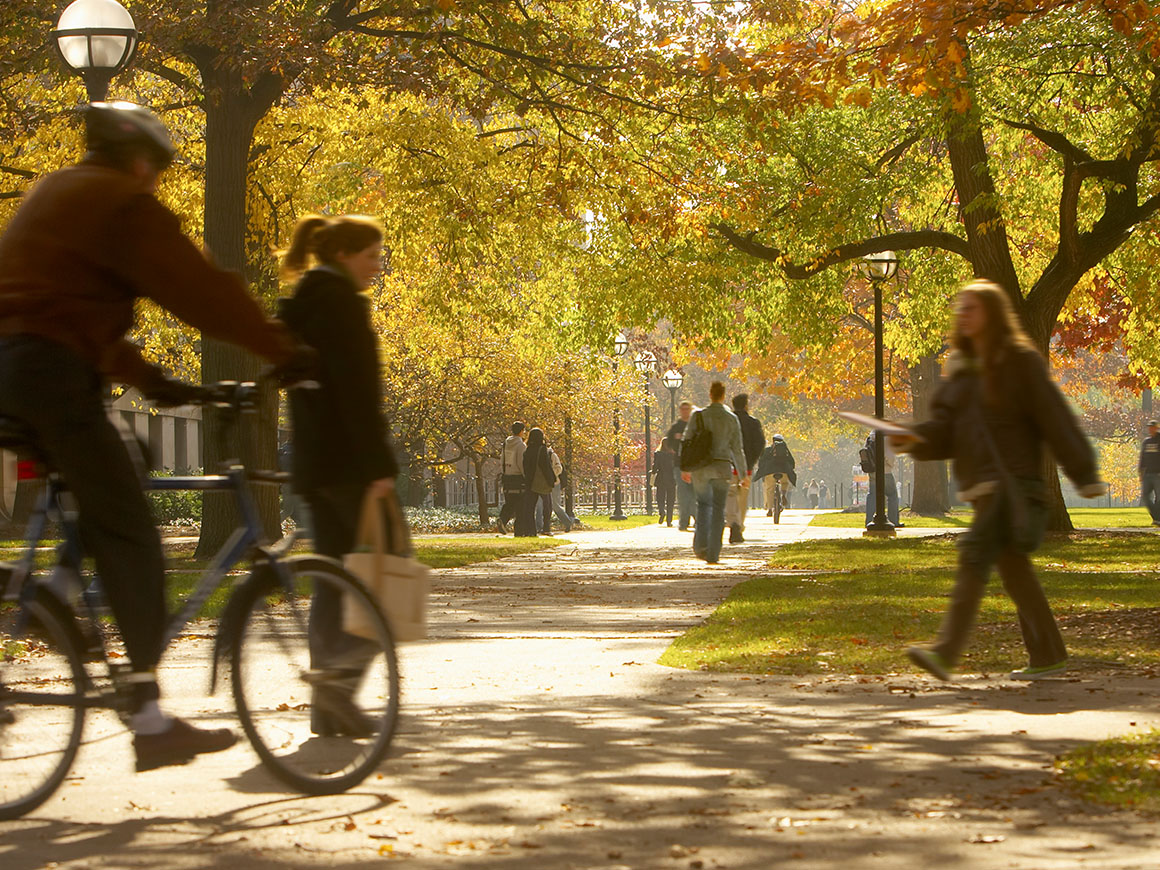While the pandemic impacted every department in higher education, advancement offices saw many of their ongoing campaigns derailed almost overnight. In the face of precarious enrollment rates and urgent student needs, how could anyone hit fundraising targets without the face-to-face interactions on which donor relationships are built? And in March 2020, when the news was bleak and toilet paper shelves empty, did anyone really want to receive a phone call asking for donations?
Despite incredible obstacles, institutions and their communities rose to the challenge, and remarkably, the Voluntary Support of Education (VSE) survey findings showed charitable giving to U.S. colleges and universities was virtually unchanged from fiscal year (FY) 2019 to FY2020.
As we enter another uniquely challenging fiscal year, advancement professionals must continue to build on recent momentum while reimagining the future of fundraising.
How advancement has innovated so far
Advancement’s rebound was made possible not only through a quick pivot to digital outreach, but also by rallying donor bases around the public good. The dual priorities of COVID-19 student relief and anti-racism initiatives in higher education demonstrated a shift in fundraising strategy, aligning campaigns around human impact first and total dollars second.
While uncertainty persisted into the fall 2020 semester, spring 2021 foretold a brighter, healthier future. Constituents were galvanized, charitable giving made an incredible comeback, and vaccination efforts began to stymie infection rates. Colleges and universities ended the spring semester with optimistic plans for a finally “normal” fall. Then the reality of the Delta variant hit, once again pushing back the “post-pandemic” finish line.
Big-ticket gifts from high-profile alumni may have made headlines throughout the pandemic, but those stories don’t paint a realistic picture of higher education today. Most institutions can’t count on a Hail Mary donation to make up for lost revenue, and those who do will miss out on seeing COVID-19 as advancement’s innovation opportunity, creating sustainable plans for fundraising that inspire collective action.
To revitalize an alumni donor pool that’s shrunk by 22.5% since 2006, institutions of all sizes need to adopt forward-thinking tactics. The most pressing challenge for fundraising efforts is establishing relationships with new and future-potential donors that will help institutions weather any storm to come.
Forward-thinking tactics
Higher education’s transformation during the pandemic demonstrates advancement’s readiness to adapt. Here are several innovative tactics to ensure your fundraising efforts continue to evolve with the priorities of donors today.
1. Turn donors into champions for student well-being
In early 2020, when closures led to mass lay-offs and greater barriers for students to meet their own basic needs, many institutions realigned fundraising efforts to support student success and well-being.
Georgia State University is one such example, having raised record-breaking funds throughout the pandemic thanks to the support of over 10,000 donors. “The funds allowed Georgia State to provide nearly 2,800 hardship grants to help students with food and housing insecurity, tuition shortfalls, transportation issues and other necessities during the COVID crisis,” University Business reports.
Even as campus communities reconvene, the needs exposed and intensified by COVID-19 haven’t gone away, and new obstacles will surely emerge with the evolving health climate. Alumni communities have demonstrated an ongoing investment in student success, but advancement teams need to continually activate them to meet fundraising goals.
Modern institutions engage donors not only by communicating campus needs, but through success stories that exemplify the impact of every gift.
2. Incorporate micro-campaigns into long-term strategy
The common perception of college philanthropy was once captured by ribbon-cutting ceremonies in front of buildings named after multi-generational alumni. In 2021, however, capital projects may no longer sway the heart of the average donor. Instead, advancement offices are increasingly investing in overlapping micro-campaigns to run alongside the large-scale projects they’ve been cultivating for years.
Micro-campaigns are not new, but they took center stage during the pandemic. An ongoing commitment to smaller, specific goals with demonstrable results will continue to inspire community support this year.
Texas Tech University’s “Red Raider Response” campaign is a notably successful case study among the institution’s many ongoing giving projects. The March 2020 campaign, “launched to support the safe return of students studying abroad,” has raised more than $130K from 500-plus donors, as well as an additional $300K to support 200 nursing students in Abilene,” Campus Technology reports.
While the Red Raider Response addressed an urgent need, it also reflected how specific goals can ignite a donor base and demonstrate charitable impact in real time. Throughout the pandemic, Texas Tech has continued to cultivate giving through additional, concurrent micro-campaigns, raising money for causes such as campus technology, food pantry supplies, and books for underserved children in the wider community.
3. Pinpoint alumni passions and cultivate giving around them
Today’s donors aren’t just putting money into a general collection fund. They’re investing in the causes they care about most. By conducting regular surveys and investing in goal-oriented analytics, you can identify the priorities of your alumni and build successful campaigns around those passions.
The University of Washington (UW)—listed as one of the institutions that raised the most funding in private donations, FY2019—brought in over $6.3 billion through their “Be Boundless” campaign. Beginning over a decade ago and concluding amid the pandemic, the project “envisioned bringing together a large and diverse coalition of people and organizations who shared an understanding of what the UW can do at a scale and level of excellence unlike any other organization.”
Crucially, the gifts made under “Be Boundless” had to be used for specific purposes as designated by the donors. This kind of personalized philanthropy at scale enabled UW to fund a variety of ambitious projects, all to advance the public good of the campus community and beyond. The historic project attracted more than 296,000 first-time donors and its legacy illustrates the power of collective action in higher education funding.
4. Embrace virtual events and build momentum for online giving

While there have been growing pains in our fast-track to the “digital first” era, most of the higher education community has gotten comfortable enough with technology that we’re no longer shouting into our webcams. Similarly, more and more donors are comfortable attending events and giving online.
Despite a historic emphasis on in-person relationship-building, advancement offices should nurture this shift and build momentum for online giving—which, Inside Higher Ed reports, grew by 10 percent in 2020.
Muhlenberg College was among the countless institutions that found new opportunities in virtual events last year. In a conversation with University Business, Rebekkah Brown, Muhlenberg College’s Vice President for Advancement, describes how her team responded to a potential $500,000 loss at the onset of the pandemic through an ongoing series of digital campaigns.
While fostering relationships with major donors from afar likely won’t replace in-person meetings, Brown cited a few key advantages that may inform future campaigns. For example, Muhlenberg’s entirely virtual 50th reunion in 2020 reconnected some alumni that hadn’t engaged since graduation.
“That made us realize that the new normal is going to look different, and it’s going to be hybrid,” Brown says. “We have to find more ways to include what we’ve learned about virtual engagement over the past year, even in our in-person events.”
5. Meet alumni at every age and stage
Just as the challenges for today’s students differ from those faced by their parents and grandparents, alumni priorities and communication methods tend to shift across class years.
“Younger donors, such as Millennials, are mission-driven, often fluent in philanthropy and want to be involved in making an impact,” reports The Napa Group. “However, they are less likely to be involved in traditional membership associations, such as alumni associations.”
Predicting preferred methods of communication across age groups is an inexact science, particularly when clouded by false assumptions. It may seem intuitive to target boomers with snail mail and millennials with Instagram stories, but by monitoring engagement analytics, you may unlock surprising insights into your donor base.
In addition to diversifying outreach strategy, institutions are investing in future donors by shifting tactics to more modern fundraising models. Inside Higher Ed notes the rise of crowdfunding, citing the University of Connecticut’s annual “Ignite” contest as an adaptation of institutional advancement. The campaign incentivizes small donations from large pools of young alumni to fund causes chosen by the campus community. By aligning with the expectations of a particular age cohort, Ignite has exceeded fundraising goals year after year.
Nurture a holistic engagement journey
Communicating the impact of charitable giving to donors has always been a top priority for advancement teams, but the pandemic has shown how critical it is for outreach to be personalized, meaningful, and nimble enough to manage disruption at any scale.
The most innovative advancement strategies, however, will yield long-term results. With the right tools and access to information, institutions can marry a holistic view of student needs and alumni behavior to nurture constituents at every stage of their journey.
Successful fundraising campaigns support the needs of students today, ensuring successful outcomes and inspiring the donors of tomorrow.



